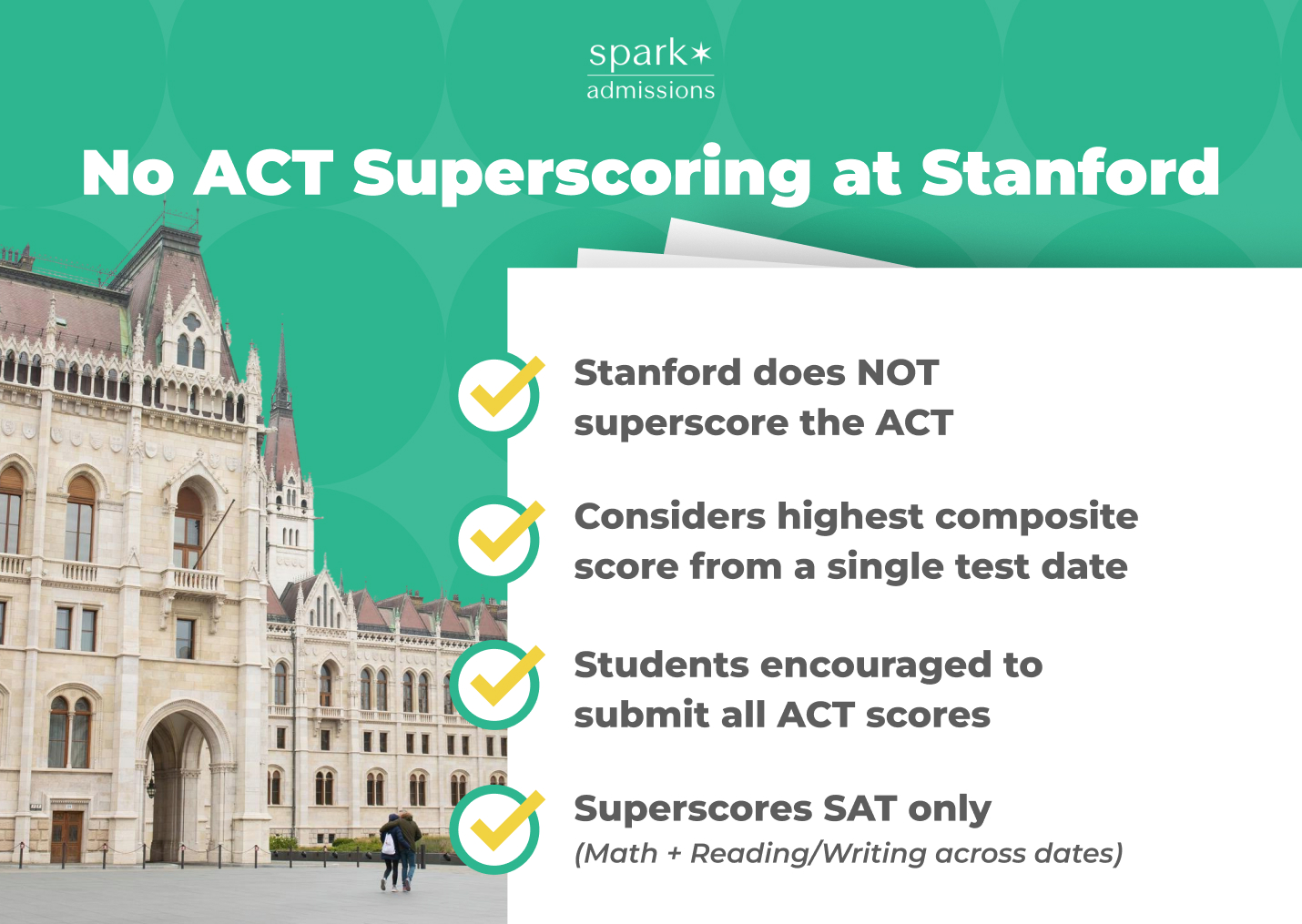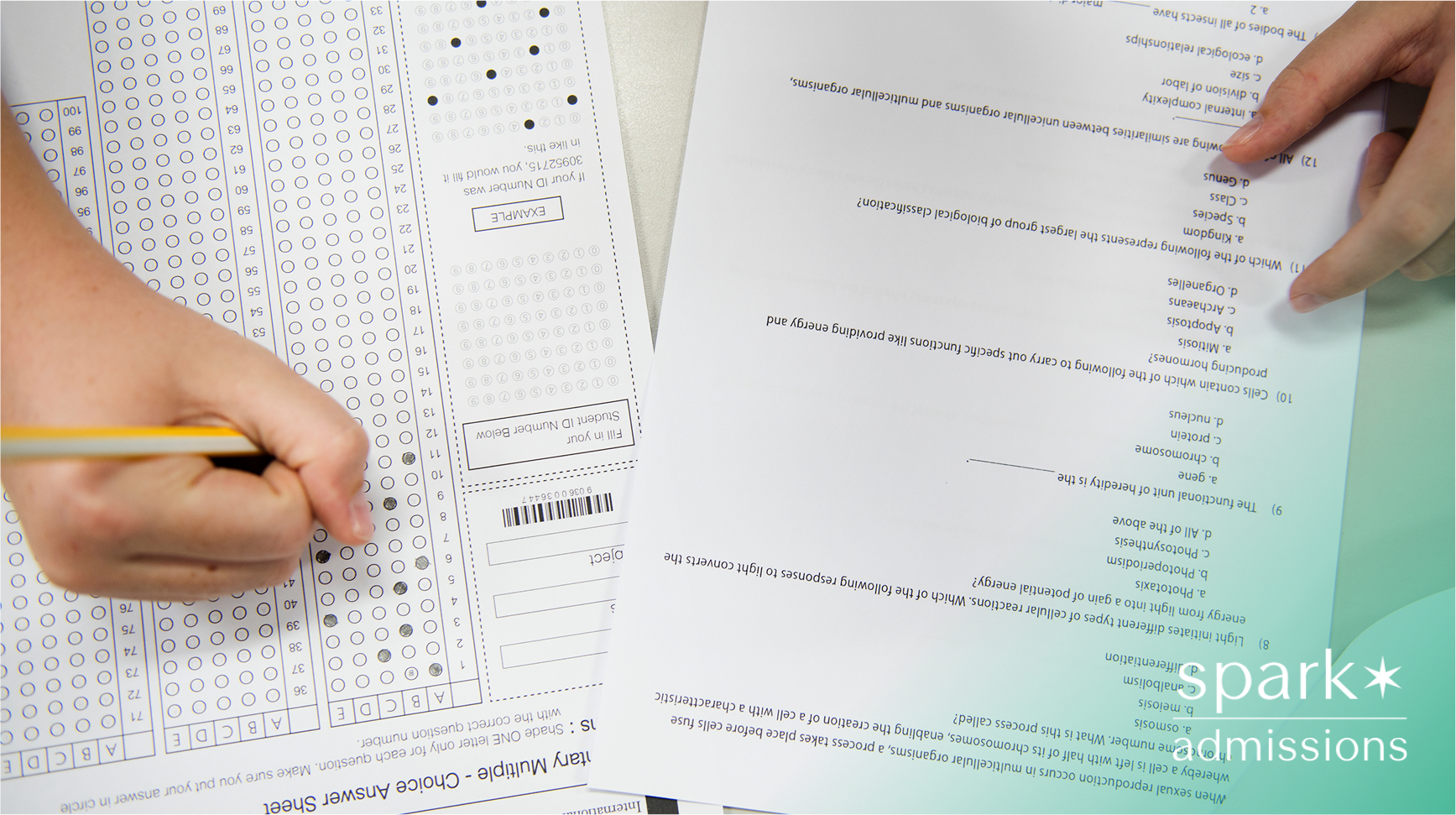
In the nuanced domain of elite university admissions, standardized testing remains a significant—if evolving—component of applicant evaluation. Among the most frequently asked questions by prospective students is how leading institutions interpret ACT scores, particularly the practice of “superscoring,” wherein a college evaluates a student’s highest subsection scores across multiple test dates.
While many selective universities have adopted superscoring methodologies, Stanford University follows a more conservative approach.

Stanford’s Official Position on ACT Superscoring
Stanford University does not superscore the ACT. According to the university’s official admissions guidelines, Stanford considers the highest composite score from a single test date rather than combining top subsection scores across multiple administrations. While applicants are encouraged to submit all available ACT results, Stanford will focus on the highest scores achieved on a standalone test.
This policy stands in contrast to the SAT score, where Stanford does superscore—reviewing the highest Math scores and Evidence-Based Reading and Writing scores across test dates. Thus, applicants taking the SAT may benefit from more strategic test retakes in individual subjects, while ACT applicants should aim for a high composite score in a single sitting.
Contextualizing Stanford’s Policy Among Peer Institutions
Stanford’s ACT policy is not universal among elite universities. Institutions such as Harvard, MIT, and Princeton are known to superscore the ACT, thereby offering applicants the advantage of showcasing their strongest subject performances across test dates. Others, like Stanford, Yale, and Caltech, maintain a stricter approach by focusing on single-date composites.
Stanford’s rationale likely stems from its commitment to holistic review. The admissions committee considers each applicant’s academic excellence history, testing record, personal context, and potential contributions to the university community. By evaluating a full composite score rather than a reconstructed superscore, Stanford maintains a consistent standard while still allowing students to submit multiple test scores to reflect trends in academic performance.

Strategic Considerations for Applicants
Though Stanford does not superscore the ACT, applicants can still apply strategic thinking to their testing plans:
- Target a Peak Performance on One Date: Students aiming for Stanford should prioritize preparation strategies that maximize performance across all ACT sections on a single test day. This may include taking the test multiple times to improve the overall composite score rather than isolating subsections.
- Consider the SAT If Superscoring Offers an Advantage: Applicants who tend to perform unevenly across subjects may find the SAT a more favorable option, as Stanford superscores SAT results. Evaluating past testing patterns or practice test scores can help determine which test aligns better with the applicant’s strengths.
- Submit All Scores if Helpful: Even though Stanford does not recompute ACT superscores, applicants may still submit multiple ACT results if doing so showcases upward trends or academic consistency across time.
The Return of Required Testing at Stanford
While Stanford adopted a test-optional policy in response to the COVID-19 pandemic, the university has since announced that it will reinstate standardized testing requirements beginning with the 2025–2026 application cycle. Applicants to the Class of 2030 (entering Fall 2026) will be required to submit scores, either an ACT or SAT, as part of their application.
This reinstatement marks a significant shift in the admissions landscape, reaffirming the importance of test performance among top-tier applicants. For students currently in high school, it reinforces the value of crafting a thoughtful and data-informed standardized testing strategy aligned with institutional expectations.
Anticipating ACT Changes in 2025
The ACT itself is undergoing notable changes. Beginning in April 2025, the test will feature a shorter format and an optional science section. The composite score will be calculated from the English, Math, and Reading sections, while the Science section will be scored separately.
As of now, Stanford has not provided detailed guidance on how it will treat results from the redesigned ACT. However, given the university’s rigorous review standards and historically conservative approach to testing, applicants should be prepared for Stanford to evaluate the composite as defined by ACT’s revised structure without superscoring subsections.
Maximizing Your Testing Strategy in a Non-Superscore Landscape
Stanford University’s ACT policy is clear: The school does not superscore, opting instead to consider the highest single-date composite score. In contrast, it does superscore the SAT, offering students strategic flexibility based on their strengths. As standardized testing regains its formal place in Stanford’s admissions process for the 2025–2026 cycle, applicants must approach their testing strategy with precision.
While the absence of ACT superscoring may narrow tactical opportunities, it doesn’t eliminate them. High-achieving students can still stand out by identifying their strongest testing format, investing in targeted preparation, and demonstrating consistent or upward performance across test dates. In doing so, they align themselves not only with Stanford’s technical requirements but with its broader admissions philosophy: authentic excellence, measured with context.


